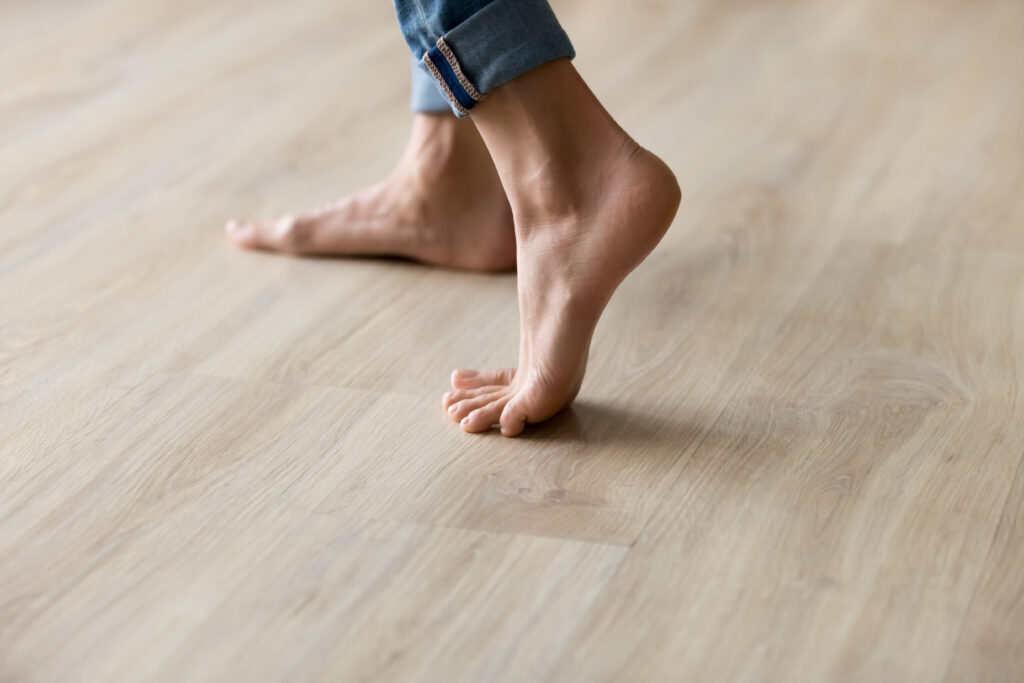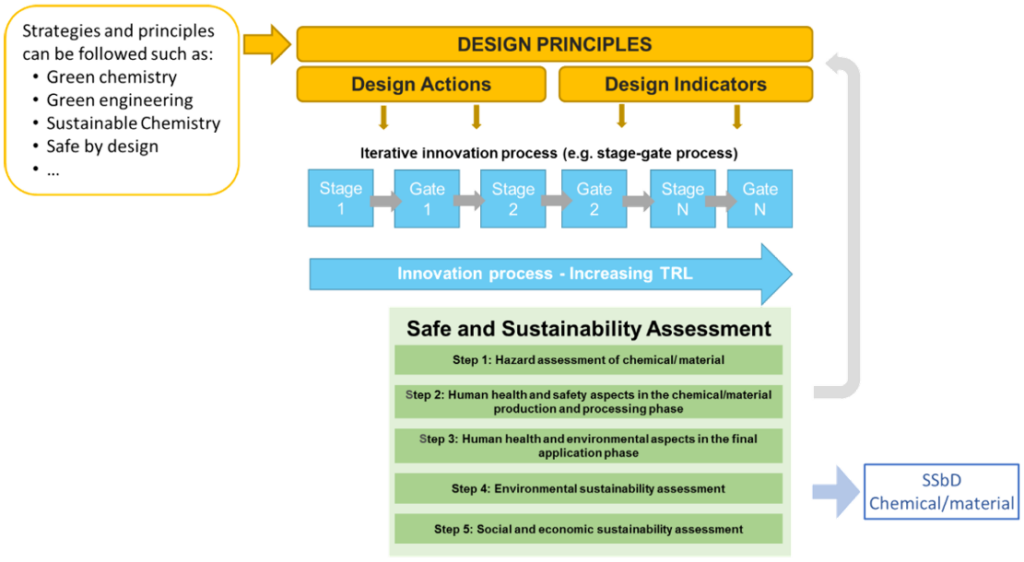
The introduction of the Safe and Sustainable by Design (SSbD) framework by the EC/JRC in 2022 has inspired a large volume of research initiatives for alternative materials that can replace Substances of Concern and can contribute towards the aim of the European Union towards a toxic free environment and support the EU Green Deal.
The bio-based coatings and adhesives of the SuperBark project are being developed not only taking into account the desired functionalities and technical requirements, but also the safety, sustainability and techno-economic performances that can be assessed through a variety of methodologies applied in Work Package 5 (WP5).
The SSbD framework includes five inter-connected steps (see Figure 1), that deal with the assessment of safety (steps 1-2-3), environmental sustainability (step 4) and socio-economic performance (step 5-optional). Within SuperBark we assess from the very early stages of innovation the safety, environmental sustainability and techno-economic profiles of the SuperBark products, in order to comply with the requirements, as set in the SSbD framework.
Preparatory work
For each innovation process, before applying any design/SSbD principles and assessment, a scoping analysis has to be performed to enable the consortium to identify the key areas to be assessed and establish the system boundaries of the processes to be evaluated. The scoping analysis has been performed for SuperBark and the consortium has initiated the first iterations of the relevant assessments.
Safety assessment
The safety assessment is based on a thorough and systematic hazard screening, that supports the phase-out of Substances of Concern, followed by hazard assessment of the chemicals/materials (Step 1). The following steps (Step 2 and 3) are concerned with the Exposure identification and assessment, and Risk characterisation during production, use and end of life of the assessed products. Hazard screening is currently ongoing, through the collection of data for the experimental processes and the materials used within.

Figure 1 – The Safe and Sustainable by Design (SSbD) framework applied in SuperBark. (Source)
Environmental sustainability assessment
The sustainability assessment is based on the application of Life Cycle Assessment within the defined system boundaries. As LCA is data intensive multiple approaches can be utilised (e.g., tiered LCA), based on the innovation maturity and the data availability, while iterations of the assessment are expected to take place as the innovation processes move forward. Data collection for LCA has been initiated for the identification of main impacts and possible hotspots within the SuperBark processes. The task is aligned with the techno-economic assessment.
Recyclability and biodegradability
As the SSbD framework is promoting the complete life cycle consideration of products, the recyclability and biodegradability of the SuperBark products will be assessed through the relevant industrial and international standards. This task will be initiated in the 2nd year of the project.
Economic assessment
Techno-economic and social assessment is proposed as an optional step within the SSbD framework, due to the lower methodological maturity of the related disciplines. Nevertheless, they are highly important thus techno-economic assessment (TEA) is performed within SuperBark. Modelling of different scenarios for the production of bio-based materials to be used as ingredients in adhesives and coatings is performed and the results will be integrated with the results of the safety and environmental sustainability assessment. This is complemented by System Dynamics (SD) modelling for the identification of factors that can enhance the performance of the bio-based products of SuperBark. Data collection for the modelling of the 1st SuperBark scenario has been initiated, while in parallel the build-up of the main parameters of the SD model has progressed. The task is aligned with the environmental sustainability assessment.
An interdisciplinary team is performing the activities in WP5: Panagiotis Isigonis and Federico Busio (LIST) are responsible for the coordination of WP5, the safety assessment and the environmental sustainability assessment. Lotta Sorsamäki (VTT) is coordinating the techno-economic assessment, while Ilze Vamža (RTU) is coordinating the system dynamics modelling. The task on evaluating the recyclability/ biodegradability of barrier coatings will be coordinated by Urška Kavčič and Janja Juhant Grkman (ICP). For wood panels, the biodegradability will be studied by Boris Forsthuber (HFA) and the recyclability will be studied by Aitor Barrio (Tecnalia).
The activities of WP5 support the technical/experimental activities of the project. The aim is to help developing bio-based coatings and adhesives through the application of various principles (design and SSbD) and multiple iterations of assessments for reaching higher safety and sustainability performances, while performing the desired functionalities as well. This will support our efforts towards a safer, toxic-free environment.

Panagiotis Isigonis, WP5 Leader – Safe and Sustainable by Design, modelling and analysis
Luxembourg Institute of Science and Technology (LIST)
Panos is part of the Environmental Health group at LIST and is leading the efforts on the application and testing of the ‘Safe and Sustainable by Design’ (SSbD) framework to the SuperBark innovation processes.
To learn more about the work in WP5, contact Panos at panagiotis.isigonis@list.lu.